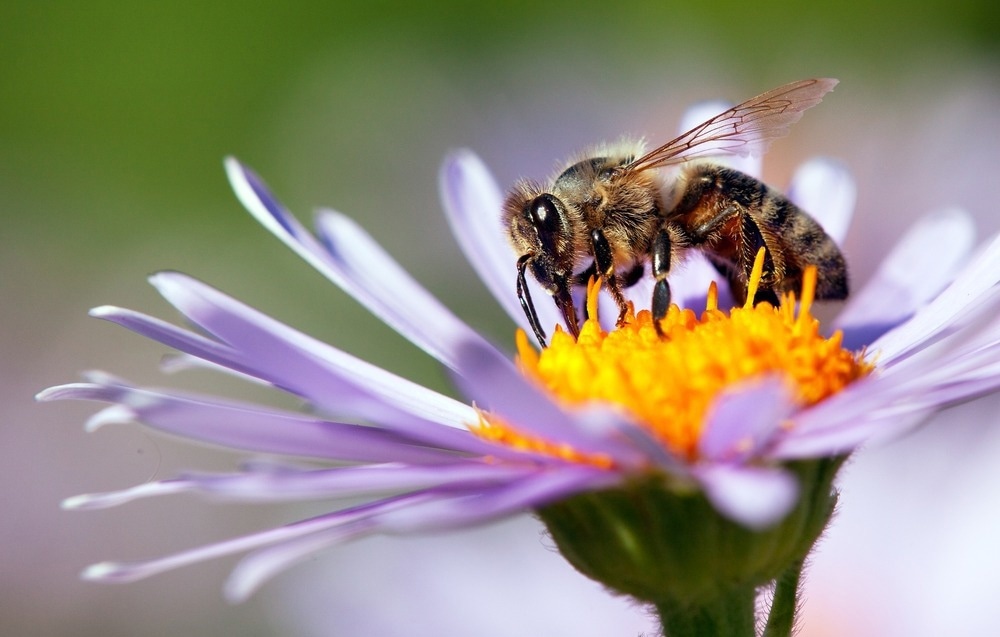Plant species classified as “pollinator friendly” in Europe start flowering up to a month too late in the spring to successfully aid in bee conservation, according to a new study from the Universities of Oxford and Exeter. Reduced colony survival and reduced queen production the following year resulted from this “hungry gap.”

Image Credit: Daniel Prudek/Shutterstock.com
The research findings revealed that pollen and nectar availability during the initial colony founding stage plays a crucial, yet previously overlooked, role in bee colony success. The study was published in the journal Insect Conservation and Diversity.
The results give us a simple and practical recommendation to help bees: to enhance hedgerows with early blooming species, especially ground ivy, red dead-nettle, maple, cherry, hawthorn, and willow, which improved colony success rate from 35% to 100%. This approach focuses on existing hedgerows in agricultural land and does not reduce farm cropping area, so can appeal to land managers whilst also providing important conservation outcomes for pollinators.”
Dr. Tonya Lander, Study Senior Author, Department of Biology, University of Oxford
Two representative European species were examined in the study: The common carder bee (Bombus pascuorum) and the buff-tailed bumblebee (Bombus terrestrisi). The BEE-STEWARD model, which combines data and simulations to forecast how various factors may affect bee populations over time, was used to evaluate these.
The researchers investigated the times of year when bumblebee food (nectar and pollen) demand peaks, the effects of food scarcity on colony survival, the relationship between food requirements and seasonal variations in colony composition (numbers of adults, eggs, larvae, and pupae), and the relationship between colony survival and queen production and the availability of early spring-blooming plants.
The findings demonstrated that food demand for bumblebees peaks from March to June. Food deprivation at this crucial time has disastrous effects on colony survival and queen production, raising the possibility of local population extinction. A two-week gap in forage availability can cause a 50–87% decrease in the generation of daughter queens, making March and April especially crucial.
We were surprised to find that the colony’s demand for nectar and pollen is driven mainly by the number of larvae rather than the number of adult workers. This explains the particularly high colony demand in March and April before the adult workers are usually seen foraging outside the colony. The larvae need pollen for growth, and most of the energy from nectar is used for thermal regulation of the brood.”
Dr. Matthias Becher, Environment and Sustainability Institute, University of Exeter
Pollinators are still declining globally, even after years of planting and conservation efforts. Early spring blooms can potentially boost queen production and colony survival rates in beehives, which could help reverse and stop this trend.
Source:
Journal reference:
Becher, M. A., et al. (2024) Resource gaps pose the greatest threat for bumblebees during the colony establishment phase. Insect Conservation and Diversity. doi.org/10.1111/icad.12736